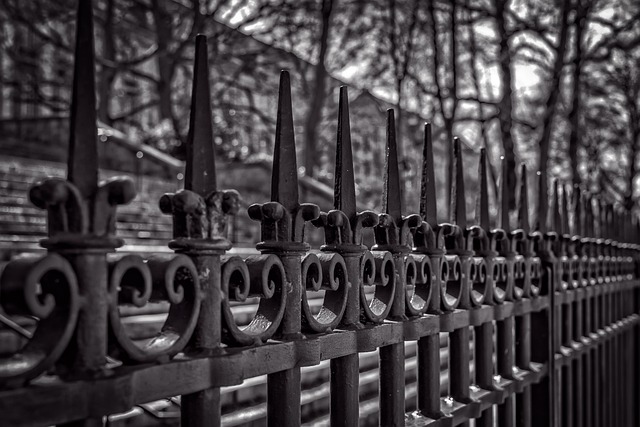In the realm of property management, fencing plays a pivotal role in defining boundaries, enhancing security, and boosting curb appeal. For vast properties, however, conventional fencing options can be both expensive and labor-intensive. This article delves into cost-effective fencing solutions tailored for large properties, exploring traditional versus innovative approaches. We’ll dissect budget-friendly materials and designs, offering insights on installation, maintenance, and longevity to help property owners make informed decisions without compromising quality or aesthetics.
- Understanding Fencing Needs for Large Properties
- Traditional vs. Cost-Effective Solutions
- Materials and Designs for Budget-Friendly Fences
- Installation, Maintenance, and Longevity Tips
Understanding Fencing Needs for Large Properties
Large properties present unique fencing challenges due to their extensive perimeters and diverse land uses. Understanding these specific needs is crucial before selecting a fencing solution. The primary considerations include security, privacy, aesthetics, and functionality tailored to the property’s layout and activities. For instance, a ranch or farm may require robust, durable fences to contain livestock, while a residential estate might prioritize elegant, low-maintenance barriers for visual appeal.
Additionally, functional aspects like ease of access, visibility, and local regulations must be addressed. Some properties may demand multiple fencing types, combining aesthetic and practical purposes. Understanding these varied needs allows property owners to make informed decisions when choosing cost-effective solutions that align with both their practical requirements and budgetary constraints.
Traditional vs. Cost-Effective Solutions
Traditional fencing methods have long been the go-to option for property boundaries, offering both security and aesthetic appeal. However, for large properties, these methods can be incredibly expensive, often requiring extensive labor and materials. This is where cost-effective solutions step in as a practical alternative.
Modern innovations in fencing technology have led to various affordable options that don’t compromise on quality or functionality. These include advanced composite materials, pre-assembled panels, and innovative designs that reduce installation time and labor costs significantly. By opting for these solutions, property owners can achieve secure perimeters while managing their budgets effectively, making it an attractive choice for large-scale fencing projects.
Materials and Designs for Budget-Friendly Fences
When considering fencing for large properties on a budget, there’s a variety of materials and designs to choose from that offer both functionality and affordability. Wood remains a popular choice due to its natural appeal and relative low cost compared to other materials. Pressed wood or composite panels can mimic the look of traditional picket fences while requiring less maintenance and being more resistant to rot than real wood. Vinyl fencing is another durable, low-maintenance option known for its longevity and variety of colors and styles.
In terms of design, a simple, straight fence with uniform posts and rails is both cost-effective and easy to install. For those seeking a bit more visual interest, consider a lattice-topped fence or a design that incorporates different panel styles. Pre-fabricated sections also offer significant time and labor savings. Remember, the key to keeping costs down is simplicity in both materials and design while still ensuring the fence meets your property’s unique needs.
Installation, Maintenance, and Longevity Tips
When installing fencing for large properties, prioritizing cost-effectiveness doesn’t mean sacrificing quality or durability. Opt for materials that are not only affordable but also built to last, like vinyl or chain link fences. Proper installation is key; ensure professionals handle the process to avoid future issues. Regular maintenance, including cleaning and inspecting for damage, can significantly extend the life of your fence.
For upkeep, a simple wash with soapy water will keep most fences looking new. Over time, certain materials may require specific care: vinyl needs occasional sealing, while wood should be treated annually to prevent rot. Regular checks for loose posts or panels ensure structural integrity. By staying on top of maintenance and choosing the right materials from the start, you can enjoy a durable, cost-effective fence that protects your property for years.
